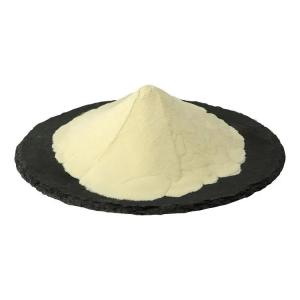News list
News Center
Hot Product
News
Balanced nutrition narratives about phosphoric acid
Time:2025-10-29
1. Introduction
Phosphoric acid is a familiar ingredient in modern food systems, particularly in beverages and processed foods. While often associated with its technological role as an acidity regulator, its presence also connects to broader discussions about balanced nutrition. Understanding phosphoric acid through an objective and science-based lens helps support informed dietary choices and responsible food development.
2. The Functional Role in Food Formulation
In food manufacturing, phosphoric acid contributes to taste balance, preservation, and pH control. It helps create the characteristic tangy flavor in soft drinks, stabilizes processed foods, and supports consistent product quality. These functions are part of the scientific design of food, ensuring sensory appeal and product safety.
3. Nutritional Context and Misconceptions
Public perception of phosphoric acid often includes debate about its place in nutrition. While it is not a nutrient itself, it is chemically related to phosphorus — an essential element for bone structure and energy metabolism. The key distinction lies in understanding that phosphoric acid serves as a functional additive, not a nutritional source. Balanced nutrition depends on the overall dietary pattern, not the presence or absence of a single ingredient.
4. Responsible Use and Dietary Awareness
Balanced nutrition narratives emphasize moderation and transparency. Food producers are encouraged to use phosphoric acid within regulated limits and communicate ingredient functions clearly to consumers. At the same time, nutrition awareness campaigns highlight the importance of diverse diets that prioritize whole foods, hydration, and variety over excessive consumption of processed items.
5. Integration with Sustainable Food Systems
Sustainability and nutrition are interconnected goals. Responsible sourcing and manufacturing of phosphoric acid, along with its careful use in food processing, align with broader sustainability principles. When integrated thoughtfully, phosphoric acid can contribute to safe, shelf-stable, and accessible food options that support global food security without compromising nutritional integrity.
6. Conclusion
Phosphoric acid illustrates the complex intersection between food technology and nutrition. By fostering balanced narratives—grounded in science, transparency, and responsibility—the food industry and consumers can better understand its role. Recognizing phosphoric acid as one part of a broader nutritional landscape encourages informed choices and supports the ongoing evolution of responsible, balanced nutrition practices.
Phosphoric acid is a familiar ingredient in modern food systems, particularly in beverages and processed foods. While often associated with its technological role as an acidity regulator, its presence also connects to broader discussions about balanced nutrition. Understanding phosphoric acid through an objective and science-based lens helps support informed dietary choices and responsible food development.
2. The Functional Role in Food Formulation
In food manufacturing, phosphoric acid contributes to taste balance, preservation, and pH control. It helps create the characteristic tangy flavor in soft drinks, stabilizes processed foods, and supports consistent product quality. These functions are part of the scientific design of food, ensuring sensory appeal and product safety.
3. Nutritional Context and Misconceptions
Public perception of phosphoric acid often includes debate about its place in nutrition. While it is not a nutrient itself, it is chemically related to phosphorus — an essential element for bone structure and energy metabolism. The key distinction lies in understanding that phosphoric acid serves as a functional additive, not a nutritional source. Balanced nutrition depends on the overall dietary pattern, not the presence or absence of a single ingredient.
4. Responsible Use and Dietary Awareness
Balanced nutrition narratives emphasize moderation and transparency. Food producers are encouraged to use phosphoric acid within regulated limits and communicate ingredient functions clearly to consumers. At the same time, nutrition awareness campaigns highlight the importance of diverse diets that prioritize whole foods, hydration, and variety over excessive consumption of processed items.
5. Integration with Sustainable Food Systems
Sustainability and nutrition are interconnected goals. Responsible sourcing and manufacturing of phosphoric acid, along with its careful use in food processing, align with broader sustainability principles. When integrated thoughtfully, phosphoric acid can contribute to safe, shelf-stable, and accessible food options that support global food security without compromising nutritional integrity.
6. Conclusion
Phosphoric acid illustrates the complex intersection between food technology and nutrition. By fostering balanced narratives—grounded in science, transparency, and responsibility—the food industry and consumers can better understand its role. Recognizing phosphoric acid as one part of a broader nutritional landscape encourages informed choices and supports the ongoing evolution of responsible, balanced nutrition practices.


 CN
CN





